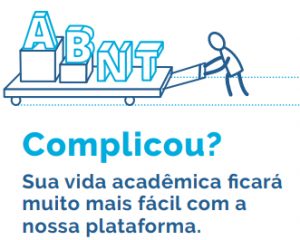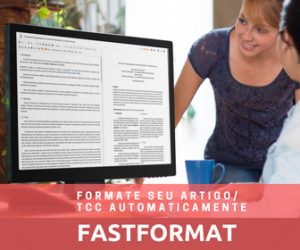Abstract
Like the title, the abstract of your article, dissertation or thesis is the gateway to the reader; in addition to giving an overview of your work, it should arouse interest in your work.
As the abstract has a limited amount of text, many people find it difficult to make a concise and interesting text. Thus, we are going to present a technique to facilitate the elaboration of the abstract, which consists of dividing them into five parts: context, objective, method, results and conclusion.
See below what each of these parts is about.
Context
In this part, you have to present to the reader what your work is about, that is, contextualize it. A simple way to do this is to answer, in a few sentences, the following questions: What problem are you investigating? Where does this problem present itself? Why is this issue important? Remember that these first lines are where you will arouse the reader’s interest.
objective
Describe the objective of your work in relation to the problem presented in the Context. For example, you can say that the objective is to understand an aspect of the problem, propose a solution to the problem, carry out a case study, among others. The objective text will depend on the type of study you performed.
Method
Here you briefly describe which methods were used; whether it was a case study, experiment, literature review, etc. It is good to include some details of the method, such as the number of participants or the number of studies analyzed. This could spark a greater interest in your work.
Result
You should present the main results of your study very succinctly. Stick to the most relevant results of your study. Remember that you want to inform and also arouse the reader’s interest. Always be honest about the results, no matter if they support your work or not.
Conclusion
In conclusion, it is important that you describe what the main findings of your study were. For example, you can describe what the implications of your study are for the state of the art and practice, or how the study can serve as a basis for future work. Don’t be exhaustive, just describe the main points.
You must write each of these parts separately and then join them together to form a unified text. However, in some publication vehicles, it is also possible to leave these parts identified, as in the example below.
Keep in mind that the abstract should speak for itself. That is, the reader must understand what is being presented without having to go into other parts of the work. For this reason, you should avoid using references and abbreviations unless they are really necessary.
Example
Below is an example of a summary written according to the tips presented, extracted and translated from our article “On the reliability of mapping studies in software engineering“.
Context: Systematic literature reviews and systematic mapping studies are becoming more and more common in Software Engineering and therefore it becomes even more important to understand the reliability of such studies.
Objective: This work presents an analysis of two systematic mapping studies to assess the reliability of mapping studies and point out some challenges related to this type of study in Software Engineering.
Method: The research is based on an in-depth case study of two published mapping studies of Software Product Line Testing.
Results: It was found that although the two studies address the same theme, there are a large number of differences when it comes to included articles and classification terms of the included articles.
Conclusions: From these results we can conclude that, although mapping studies are important, we cannot always fully trust their results. We also point out four problems that need to be tackled when designing secondary studies (systematic mapping studies and systematic literature reviews).
In FastFormat, the creation of the abstract is much simpler, see in the video how to insert it in your document.
Experimente grátis o FastFormat
Além da formatação automática, o FastFormat conta com vários recursos para facilitar a construção de seus trabalhos acadêmicos. Acesse agora!




Add comment